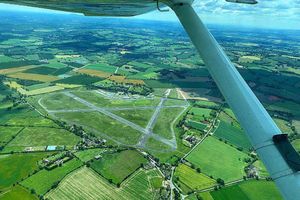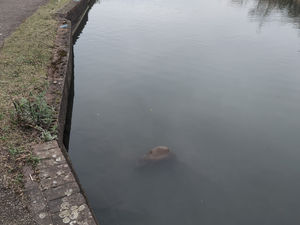Investigation reveals reason for aircraft crash near Halfpenny Green Airport
An air investigation has found that an aircraft crashed whilst approaching to land at Halfpenny Green Airport after it ran out of fuel.

The report which was published on September 14 states that an aircraft with one person on board was damaged during the subsequent forced landing in a field as it ran out of fuel whilst approaching to land at Wolverhampton Halfpenny Green.
The report also describes the damage caused to the aircraft in the incident - stating its nose gear was bent and its glass fibre nose crushed.
The incident which took place on May 29 this year, happened despite the 71-year-old pilot using a navigation application that was capable of calculating the fuel required for the flight. No pre-flight calculation was performed.
The report states: "The pilot had planned to fly from Sandown Airport, Isle of Wight, to Otherton Airfield, Staffordshire, as part of a group of other aircraft. The aircraft was fully fuelled to 50 litres (13.2 US gallons) and a container with 20 litres (5.3 US gallons) was carried on the passenger seat next to the pilot.
"The pilot was using a software navigation application on a portable electronic device and had entered a route from Sandown passing to the east of Southampton, overhead Brize Norton towards Wolverhampton and then to Otherton.
"The flight was to be flown at an airspeed of 50 mph. The pilot advised that he was aware that he would need to land en route to refuel but had not planned where that would take place nor reviewed the calculated fuel required. However, this information would have been available to him using the navigation application."
After taking off from Sandown, the pilot initially remained flying in the local area before 30 minutes later heading towards the first turning point east of Southampton. The pilot advised that there was a headwind and also some turbulence. As the aircraft approached Brize Norton control zone, which the pilot intended to overfly, he could see a layer of cloud ahead.
"Unsure that he could remain in VMC, the pilot altered course to the west, towards Cotswold Airport. The pilot advised that the turbulence made it difficult to read the fuel quantity that was marked on the tanks behind him and so decided to land as soon as possible to refuel.
"The pilot subsequently landed at Blakehill Farm nature reserve, which is a disused airfield about 7 nm south-east of Cotswold Airport. The flight time from Sandown had been 2 hours 16 minutes. The pilot stated that he then uplifted the 20 litres of fuel, which provided about 30 litres of fuel in the tanks. This he estimated was sufficient to fly to Wolverhampton Halfpenny Green Airport, where he intended to refuel again before flying on to Otherton.
"The pilot stated that he did not perform a fuel calculation prior to takeoff. After takeoff the pilot initially flew west to route around Cotswold Airport before heading north, flying over Gloucester Airport after 33 minutes into the flight.
"As the aircraft approached Wolverhampton, 55 minutes after having overflown Gloucester, the pilot was aware that the aircraft was now low on fuel and requested an immediate approach to land on Runway 34. However, shortly afterwards the engine stopped due to fuel starvation and the pilot carried out a forced landing in a field, 700 m short of the runway threshold.
"The field was furrowed, and the nosewheel dug into soft soil causing the aircraft to tip forward and it came to rest inverted. The pilot was uninjured and vacated the aircraft unassisted. The aircraft’s nose structure and nose gear were damaged. The time from departing Blakehill Farm to landing in the field was 1 hour 29 minutes."
The report concluded that the pilot did not calculate the required fuel for the flight from Sandown to Otherton or utilise the navigation application function that provided this information. Accordingly, a clear plan of where the aircraft would be landed en route to refuel and allowance for reserve fuel was not established. This led to the pilot initially landing at a disused airfield to refuel from a container that he was carrying and then subsequently making a forced landing having run out of fuel. This accident highlights the importance of pre-flight planning.




